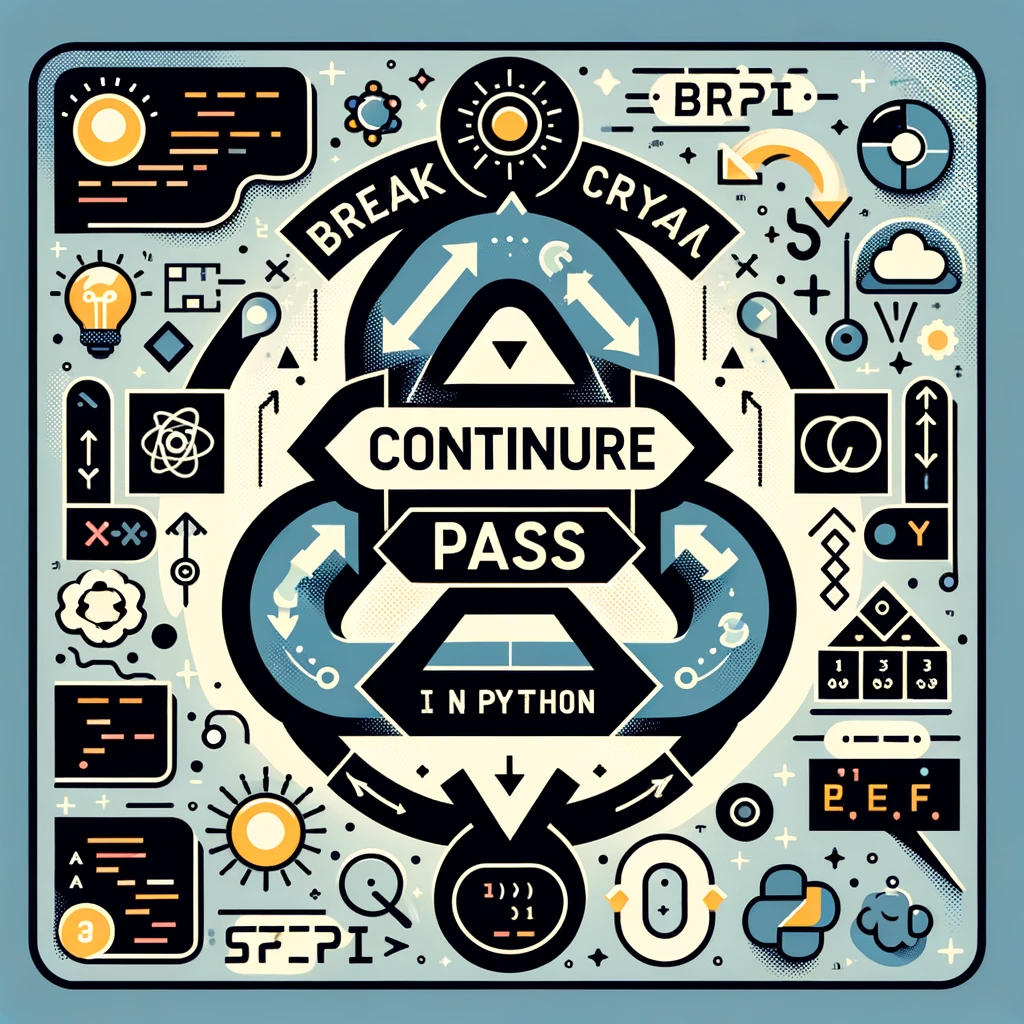In Python, loops are powerful tools for executing repetitive tasks. However, there are scenarios where you might need to modify the typical flow of a loop. This is where the control statements break, continue, and pass come into play. Understanding these statements is crucial for writing efficient and flexible code. This post will explore how to use break, continue, and pass in Python loops to alter loop behavior effectively.
The Break Statement
The break statement is used to terminate the loop prematurely when a specific condition is met. It allows you to exit out of a for or while loop, regardless of the original termination condition.
Usage of Break
for number in range(10):
if number == 5:
break
print(number)
In this example, the loop will print numbers from 0 to 4. When the number reaches 5, the break statement is executed, and the loop is terminated immediately.
The Continue Statement
The continue statement is used to skip the rest of the code inside the loop for the current iteration and move on to the next iteration. It allows you to skip specific parts of a loop when a condition is met.
Usage of Continue
for number in range(10):
if number % 2 == 0:
continue
print(number)
Here, the loop will print only odd numbers. When it encounters an even number, the continue statement is executed, skipping the print statement and moving to the next iteration.
The Pass Statement
The pass statement is a null operation; it does nothing. It is used as a placeholder in situations where syntactically some code is required but you don’t want any action to be taken.
Usage of Pass
for number in range(10):
if number % 2 == 0:
pass # This is a placeholder for future code.
else:
print(f"Odd number: {number}")
In this example, the pass statement is used as a placeholder for even numbers, indicating that no specific action is taken for them. The loop continues to print odd numbers.
Best Practices and Tips
- Use Break Carefully: Overuse of
breakcan make your code harder to read and debug. Use it judiciously to ensure clarity and maintainability. - Leverage Continue for Clarity: The
continuestatement can be used to reduce nesting and improve the readability of your code. - Reserve Pass for Placeholders: Use
passas a temporary placeholder while developing or prototyping code. It’s a reminder that you intend to add logic later.
Engage and Experiment
Now that you’re familiar with how to use break, continue, and pass in Python loops, it’s time to experiment with them in your own code. Try incorporating these statements into your loops to see how they can help you manage loop behavior more effectively.
Call to Action
Have you used break, continue, or pass in your Python projects? Share your experiences and any tips you’ve learned in the comments below. Let’s learn from each other and enhance our understanding of Python loop control!





No comment